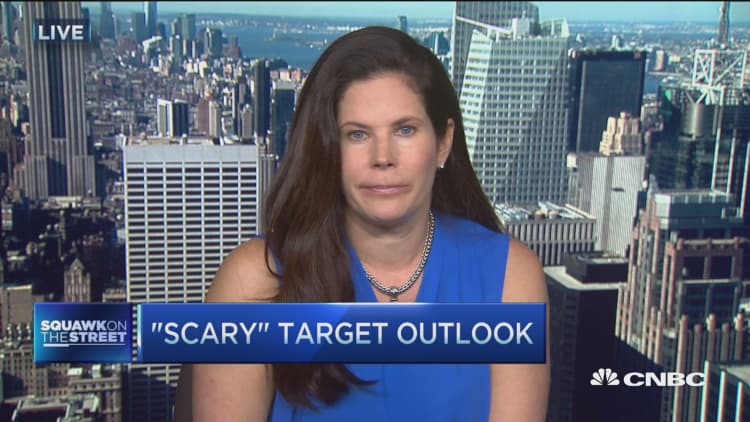
"Geographic volatility."
That's what Target CEO Brian Cornell cited for some bizarre spending patterns he observed in the latest quarter, and why he's confident Target can still hit its earnings forecast for the full year, even as first-quarter comparable-sales missed analysts' expectations and sales trends remained weak heading into the second quarter.
Take apparel. The discount retailer saw double-digit increases in certain markets where the weather was more favorable. But in the Northeast, robust gains were muted by "fairly significant declines." Net, net, the retailer's comparable apparel sales grew in the low-single digits.
In fans, another seasonal category, certain markets saw a 20 percent lift, whereas others were down 90 percent, Cornell said.
"It gives me confidence to say what we're doing is working because it's working in many parts of the country," he said, explaining that the company runs the same playbook across the U.S.
Investors weren't as sure as they bailed out of the stock Wednesday. Target expects second-quarter comparable sales of "flat" to down 2 percent, which is below the pace they are expecting for the entire year. For the full-year, Target sees comparable sales in the range of 1.5 percent to 2.5 percent, while earnings are expected to fall between $5.20 and $5.40 a share.
Cornell said wild variations in performance in the unseasonably cold Northeast, versus the West Coast or parts of the Midwest, indicate there has been no step back in the consumer's fundamentals, nor a pullback from Target's stores.
Under Cornell's leadership, the retailer has been focusing on its so-called signature categories — style, baby, kids and wellness — where comparable sales grew at more than three times the pace as the company's average.
Target has also been investing in its online operations, which contributed to a 23 percent comparable boost over the prior-year period. That growth is notable because, even though it marks a deceleration from the company's 34 percent fourth-quarter lift, it showed many shoppers stuck with the brand once it ended its free shipping holiday offer. Digital remains a small chunk of Target's sales, at less than 5 percent.
Though management said it does not expect a change in weather or consumer spending to occur overnight, it does foresee improvement as the quarter and year progress. However, elevated inventories at Target's competitors will likely cause promotional activity to persist in the space, which it has factored into its second-quarter forecast.
"There's no structural change that gives us pause and has us changing our strategy," management said. "We see this as a momentary speedbump."
Not everyone is convinced that is the case. Deutsche Bank analyst Paul Trussell called Target's second-quarter guidance "scary," saying that type of deceleration would make him question the pace of overall consumer spending moving forward.
"This is now a question about consumers' health," he said.
Wal-Mart will give investors a better clue about the health of the discount shopper when it reports earnings Thursday morning.





